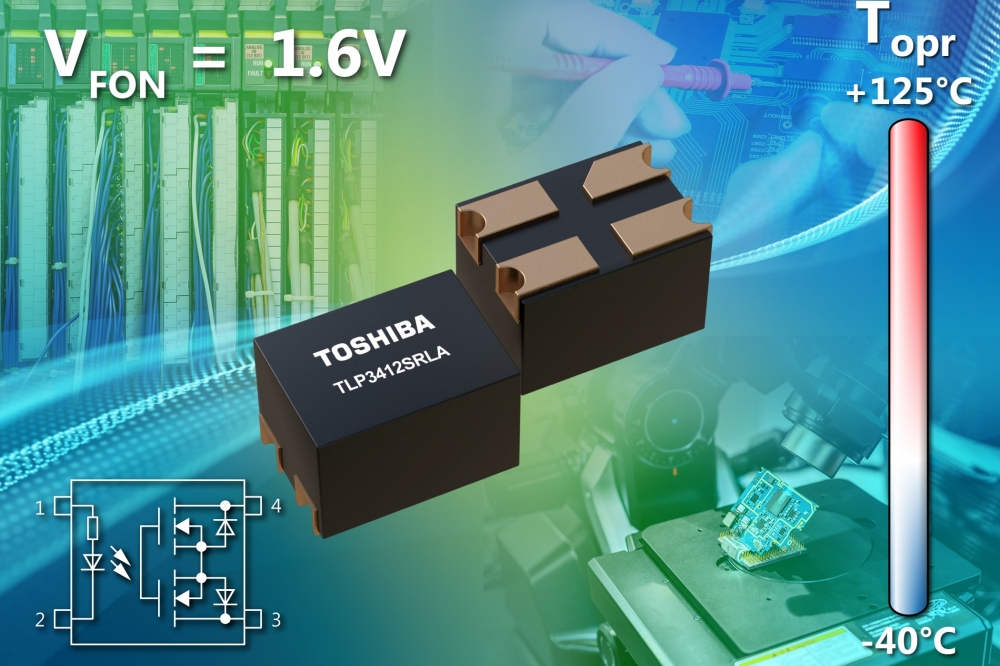Toshiba introduces new photorelays for semiconductor test applications

New device offers low voltage drive and high temperature operation.
Toshiba Electronics Europe has released a new photorelay that is capable of operating with a low voltage drive. This, along with the extended operating temperature range, makes it ideal for demanding semiconductor test applications.
Semiconductor testers verify that the device under test (DUT) meets specifications by applying a voltage/current to the relevant pins. As traditional relays are not suitable, it is common to use photorelays due to their solid-state operation and compact size. Typically, an FPGA (field programmable gate array) is used for control but, as these increasingly operate at 1.8V, compatibility can be an issue.
The new TLP3412SRLA offers Toshiba’s lowest ever photorelay operating voltage (VFON) of just 1.6V, making it suitable for use with low voltage 1.8V FPGAs. A resistor is built in on the primary (LED) side, enabling voltage-controlled operation without requiring external resistors.
It is common to test semiconductors at elevated temperatures and with photorelays placed on the probe card close to the DUT, they will be required to operate in high ambient temperatures. The new device has a maximum operating temperature rating of 125°C, thereby ensuring adequate temperature margin within the equipment.
With the need for high levels of throughput in semiconductor testing, often multiple DUTs are tested in parallel, requiring very dense probe card designs. The TLP3412SRLA is housed in Toshiba’s original S-VSON4T small package measuring just 1.45mm × 2.0mm × 1.4mm.
The new photorelay is configured for a 1-Form-A (NO) contact type and has an on-state current (ION) of 400mA continuously, or 1200mA when pulsed (IONP). The on-state resistance is typically 1.0Ω and switching times (tON/tOFF) are less than 350μs / 150μs respectively. Isolation voltage (BVs) is at least 500Vrms.

































